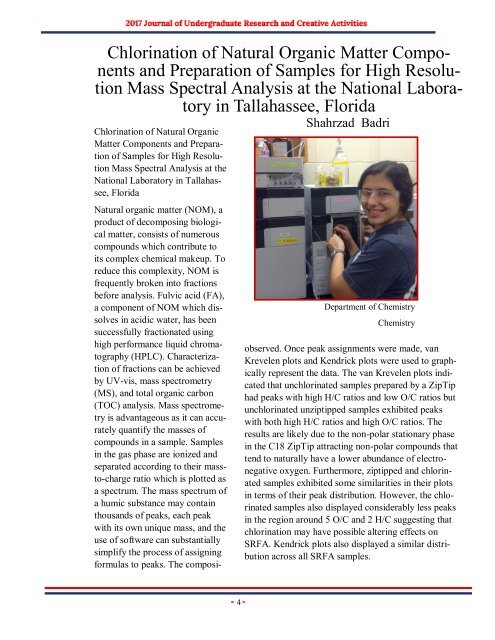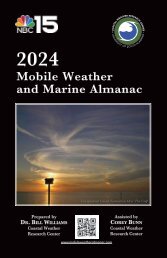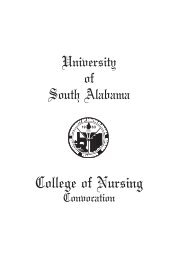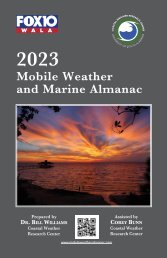JOURACA_SP_2017
Create successful ePaper yourself
Turn your PDF publications into a flip-book with our unique Google optimized e-Paper software.
Chlorination of Natural Organic Matter Components<br />
and Preparation of Samples for High Resolution<br />
Mass Spectral Analysis at the National Laboratory<br />
in Tallahassee, Florida<br />
Shahrzad Badri<br />
Chlorination of Natural Organic<br />
Matter Components and Preparation<br />
of Samples for High Resolution<br />
Mass Spectral Analysis at the<br />
National Laboratory in Tallahassee,<br />
Florida<br />
Department of Chemistry<br />
Chemistry<br />
Natural organic matter (NOM), a<br />
product of decomposing biological<br />
matter, consists of numerous<br />
compounds which contribute to<br />
its complex chemical makeup. To<br />
reduce this complexity, NOM is<br />
frequently broken into fractions<br />
before analysis. Fulvic acid (FA),<br />
a component of NOM which dissolves<br />
in acidic water, has been<br />
successfully fractionated using<br />
high performance liquid chromatography<br />
(HPLC). Characterization<br />
of fractions can be achieved<br />
by UV-vis, mass spectrometry<br />
(MS), and total organic carbon<br />
(TOC) analysis. Mass spectrometry<br />
is advantageous as it can accurately<br />
quantify the masses of<br />
compounds in a sample. Samples<br />
in the gas phase are ionized and<br />
separated according to their massto-charge<br />
ratio which is plotted as<br />
a spectrum. The mass spectrum of<br />
a humic substance may contain<br />
thousands of peaks, each peak<br />
with its own unique mass, and the<br />
use of software can substantially<br />
simplify the process of assigning<br />
formulas to peaks. The composiobserved.<br />
Once peak assignments were made, van<br />
Krevelen plots and Kendrick plots were used to graphically<br />
represent the data. The van Krevelen plots indicated<br />
that unchlorinated samples prepared by a ZipTip<br />
had peaks with high H/C ratios and low O/C ratios but<br />
unchlorinated unziptipped samples exhibited peaks<br />
with both high H/C ratios and high O/C ratios. The<br />
results are likely due to the non-polar stationary phase<br />
in the C18 ZipTip attracting non-polar compounds that<br />
tend to naturally have a lower abundance of electronegative<br />
oxygen. Furthermore, ziptipped and chlorinated<br />
samples exhibited some similarities in their plots<br />
in terms of their peak distribution. However, the chlorinated<br />
samples also displayed considerably less peaks<br />
in the region around 5 O/C and 2 H/C suggesting that<br />
chlorination may have possible altering effects on<br />
SRFA. Kendrick plots also displayed a similar distribution<br />
across all SRFA samples.<br />
4

















